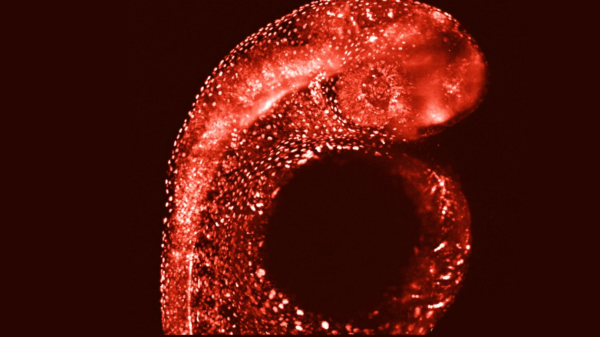Dorus Gadella, a biologist at the University of Amsterdam, led a team of researchers in 2016 that successfully developed a novel red fluorescent protein that represents a substantial development. This protein was designated as mScarlet.
DNA coding mScarlet for cell biology research
The scientific community recognized their red-glowing protein immediately. After 3,400 requests, almost every country in the world currently employs the DNA coding mScarlet for cell biology research.
However, the mScarlet protein was found to fold more slowly and incompletely in mammalian cells than the commonly used green fluorescent protein, resulting in less than optimal brightness. The scientists continued to work on the protein to accelerate and optimize its folding.
A research team from the University of Amsterdam, lead by Dorus Gadella, has created a novel fluorescent protein that emits a brilliant red light: mScarlet3. They revealed the Genetic code and characteristics of this protein.
One with rapid folding but diminished luminosity
They utilized two variants of mScarlet that they had previously developed: one with rapid folding but diminished luminosity and another with sluggish folding but finally dazzling fluorescence. They aimed to construct a new protein by combining these two’s beneficial properties.
They accomplished this by introducing many precise modifications to the structure of the protein, which gave rise to mScarlet3. The most current iteration now combines the brightest illumination with rapid and thorough folding.
mScarlet3 was transported to the Institut de Biologie Structurale in Grenoble (CNRS, CEA, Université Grenoble Alpes) for structural testing. Antoine Royant, a structural biologist, used the European Synchrotron ESRF, the world’s brightest X-ray source, to map the molecular structure of a protein.
Royant stated, “It was discovered that mScarlet3 is so brilliant due to a unique hydrophobic (oily) local structure of the protein, which both accelerates and optimizes protein folding.”
With this new, vastly enhanced form of the red fluorescent protein, the scientists’ toolbox in the laboratory is now more comprehensive than ever.
Gadella stated, “The experiences with mScarlet were already very positive, so we anticipate that mScarlet3 will gain even more popularity among researchers and quickly become the new global standard.” Brilliant red fluorescent proteins are in high demand because their excitation is less damaging to cells than that of green fluorescent proteins.
Moreover, red light scatters less than other wavelengths, allowing you to observe chemical activities at deeper cell layers. With mScarlet3, we at last have a highly robust, bright red fluorescent protein that folds rapidly and completely, without any additional drawbacks. We have high hopes for additional mScarlet3 applications, including the development of novel red fluorescent biosensors that can be used to scan specific cell processes.

